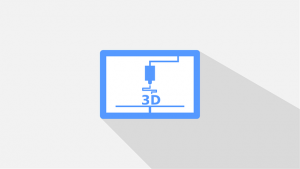
3D printing has become increasingly popular in recent years. Statistics show that the global 3D printing market is now valued at over $21 billion, compared to just $4.4 billion in 2012. Manufacturing companies big and small alike use it to build products, as well as prototypes, in their daily operations. Some 3D printers, however, may suffer from a phenomenon known as ghosting. What is ghosting exactly, and how does it affect 3D printers?
What Is Ghosting?
Also known as ringing, ghosting is a phenomenon in which a 3D printer creates distorted lines that resemble ripples across the surface of a printed object. It’s known as “ghosting” because the distortion is difficult to spot from afar. When inspecting up the printed object up close, though, you’ll notice the distorted lines. Rather than featuring a smooth surface with invisible lines, the printed object will have misaligned lines that visually protrude outward.
The Impact of Ghosting
Ghosting is problematic for 3D printers because it affects the dimensions, as well as the overall quality, of the printed object. 3D printers build objects by depositing layers of material. If the material fails to align properly during this process, it may result in ghosting. The printed object will have an uneven and visually distorted texture that fails to adhere to the model’s original dimensions.
The dimensional nuances between a “ghosted” object and its original model may be subtle. Nonetheless, many manufacturing applications require printed objects to feature specific dimensions. If an object is built with a 3D printer that causes ghosting, it won’t feature the same dimensions as its original model. Therefore, the printed object may have to be scrapped and reattempted.
What Causes Ghosting
Most instances of ghosting are caused by vibrations. If you’ve ever operated a 3D printer before, you may recall how it vibrates during use. 3D printers contain many different mechanical parts that move around to deposit material in areas where it’s needed. The faster a 3D printer moves, the stronger its vibrations will be. If a 3D printer produces excessively strong vibrations, it may deposit material in the wrong areas, resulting in ghosting.
Ghosting can also be caused by loose belts. If one or more belts in a 3D printer is loose, it may fail to deposit material in the correct area. The material may be slightly off, thereby creating the appearance of ghosting. Problems such as these can be prevented by using a high-quality 3D printer as well as tightening its respective belts and other moving parts.
Ghosting is a common issue that causes stress for a lot of amateur printers, with our experience we know how to minimize ghosting in our prints. Utilize our experience and have us print your products.
